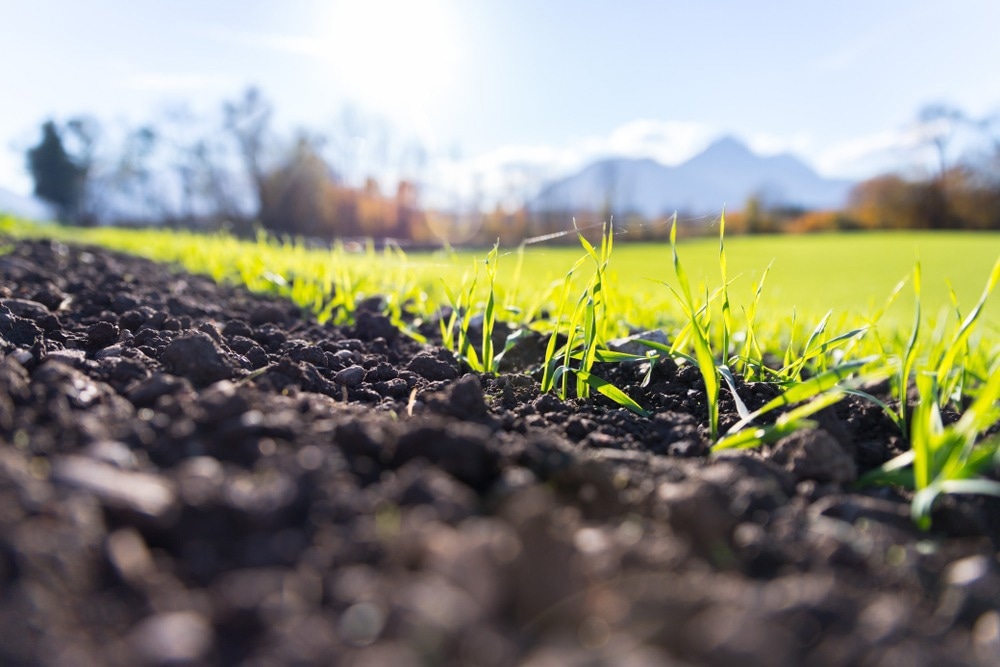Agriculture is a key industrial sector. Feeding the world’s growing population requires the use of ever-increasingly sophisticated technologies to overcome the challenges of a warming planet and climate change.

Image Credit: Patrick Daxenbichler/Shutterstock.com
Sensors are rapidly becoming a central technology in multiple industries, giving workers access to vast reams of data and the ability to make decisions based upon them. This article will explore how farmers can utilize weather sensors to improve the climate resilience of their operations and ensure continued food security.
Introduction
Ensuring the climate resilience of the agricultural sector is paramount: agricultural production accounts for around 80% of the total consumed calories worldwide, either directly or indirectly. Continued and improved agricultural production is vital to the UN’s Sustainable Development Goals.
While great strides have been made in recent decades in improving global food security, around one in ten people worldwide are affected by profound and severe food insecurity, which is being exacerbated by geopolitical issues and climate change.
Now, farmers and governments are increasingly turning to technological solutions to improve access to adequate nutrition.
The Impact of Climate Change Upon Global Food Supply
The impact of human population and activity on the environment has been known for several decades, with the effects now being felt globally as extreme weather events increase.
All sectors of the economy have seen impacts in recent years, including tourism, energy, construction, health, forestry, and agriculture. Both local, regional, and international infrastructure are increasingly affected by changes in weather systems caused by a warming climate.
Climate change affects crop growth and livestock production, with effects such as increased rainfall, localized droughts, and disease and pest infestations causing ever-evolving challenges for the agriculture sector to ensure continued regional and global food security.
The Role of Sensors in Smart Agriculture
Remote sensing greatly benefits the agricultural sector as it can gather granular data across large areas over different spatial-temporal resolution scales. Indeed, many satellite-based sensor systems are now being employed to monitor agricultural cover, changing land use, crop yields, and weather changes.
One such system that has been launched in recent years is ASAP (Anomaly Hot Spots for Agricultural Production.) An early warning system developed and launched by the Monitoring Agricultural Resources unit provides global-level production anomaly predictions. However, it is currently not available in all regions.
CropWatch
Recognizing the crucial role that weather sensors can play in improving climate resilience in the agricultural sector and, therefore, global food security, representatives of 11 developing nations met in Mauritius in August 2023.
Participants took part in the CropWatch-ICP Programme, a UNCTAD-led initiative. The program uses satellite-based observation systems and climate-related data to monitor crop data, providing information on weather events, pests, disease, and drought conditions. The technology can be customized to local conditions.
The program will give developing nations, which are particularly vulnerable to climate change, the ability to respond better to disasters and improve crop planning. It will also give them more effective early warning capabilities. This data-driven approach drives technology-focused solutions for participants.
Providing an Integrated Framework
A study recently published in Nature Scientific Reports has demonstrated the effectiveness of an integrated framework incorporating remote sensing and computer-based modeling capabilities.
Results of the study revealed significant changes in geospatial and climactic variables between 2002 and 2021, and the framework could be used to provide predictions through 2060. This could significantly help agricultural planning for a warming climate, which would ultimately benefit global food security.
Additionally, the study demonstrated the efficacy of its approach for frost-affected areas and provided information on the impact of climate change on Lake Urmia, a hyper-saline lake that has seen decreasing water levels since 1995.
The impact of the Lake Urmia drought has far-reaching implications on the ecosystem of several vulnerable nations, including Iran, Iraq, and Azerbaijan. Such is the potential issue with Lake Urmia that the UN has urged special attention and remedial efforts to avert potential disaster for the region.
In Summary
Climate change, extreme weather events, drought, and the impact on global agriculture and food security are pressing issues for global governments, requiring intense focus and technological innovation.
Weather sensors and associated technologies are playing a key role in helping the sector become more climate-resilient in the near- and long-term. Recognizing the importance of this role, many research studies and commercial enterprises are incorporating weather sensor datasets into effective frameworks.
Although more data is required to fully understand the impacts and provide relevant and sufficient planning, utilizing these technologies is helping to prepare the world for the worst impacts of climate change. Thus, continued access to adequate nutrition can be ensured by scientists and governments worldwide.
References and Further Reading
United Nations Conference on Trade and Development (2023). Climate-smart agriculture: How satellite technology can help [online] unctad.com. Available at: https://unctad.org/news/climate-smart-agriculture-how-satellite-technology-can-help
Garajeh, M. K., et al. (2023). An integrated approach of remote sensing and geospatial analysis for modeling and predicting the impacts of climate change on food security Nature Scientific Reports, 13, p.1057 [online] nature.com. Available at: https://www.nature.com/articles/s41598-023-28244-5
Annappa, N. N., et al. (2023). Climate Change's Threat to Agriculture: Impacts, Challenges and Strategies for a Sustainable Future Climate Change and Agriculture, pp. 113-136 [online] researchgate.net. Available at: https://www.researchgate.net/publication/375380239_Climate_Change's_Threat_to_Agriculture_Impacts_Challenges_and_Strategies_for_a_Sustainable_Future
Disclaimer: The views expressed here are those of the author expressed in their private capacity and do not necessarily represent the views of AZoM.com Limited T/A AZoNetwork the owner and operator of this website. This disclaimer forms part of the Terms and conditions of use of this website.